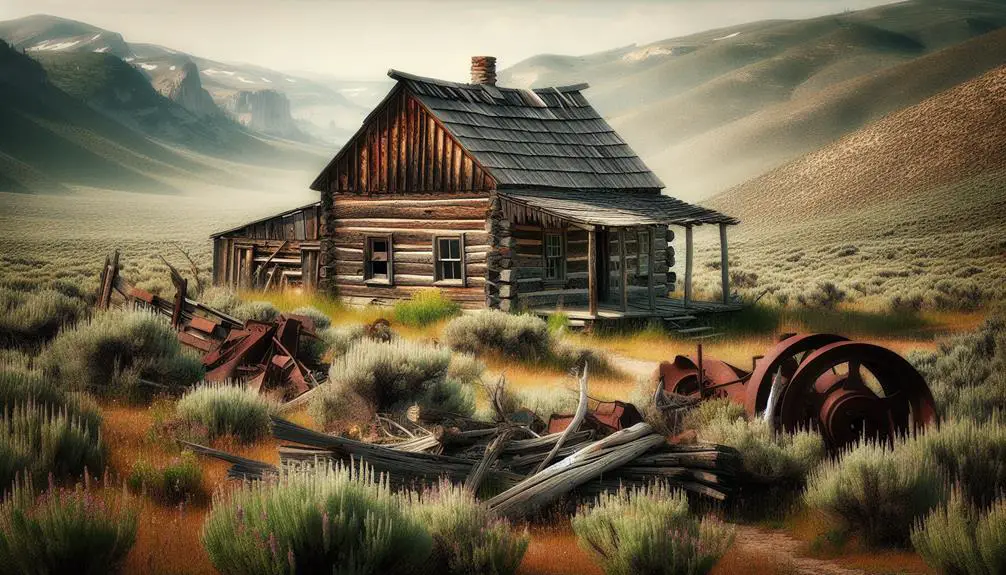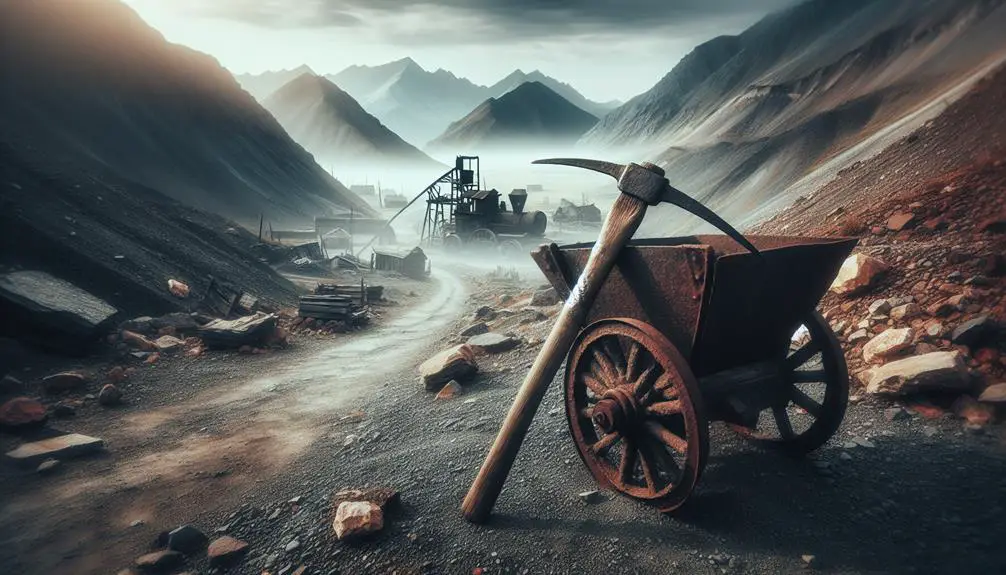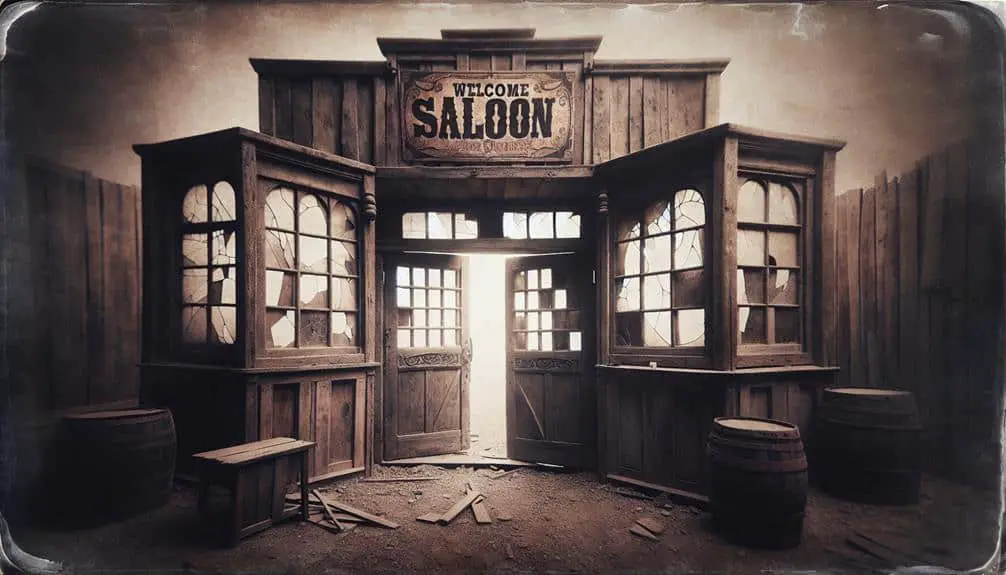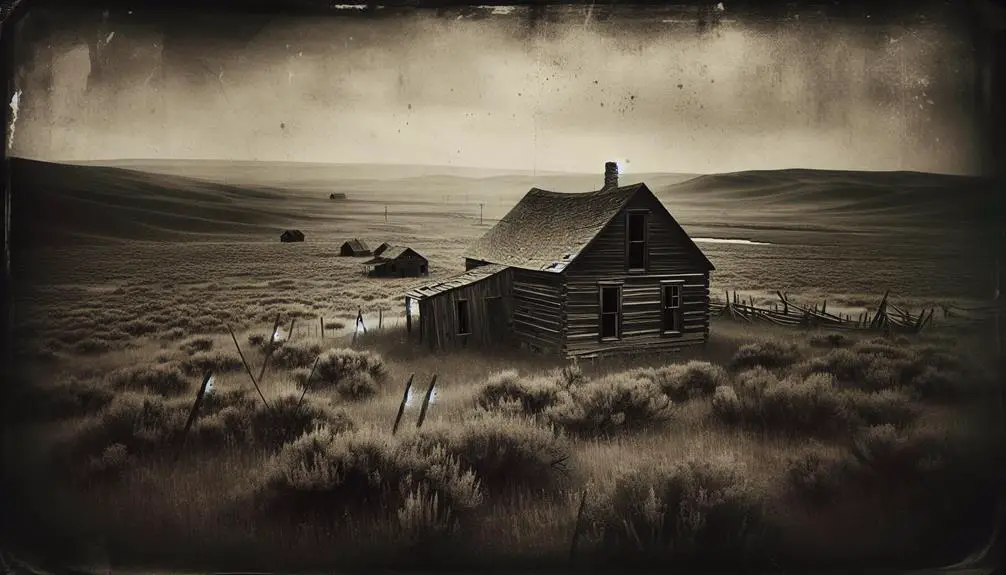Embark on an adventure to uncover abandoned pioneer homesteads in the American West. Experience the legacy of early settlers who sought new beginnings amidst harsh conditions. Explore the evolution of homestead architecture, from traditional designs to innovative adaptations using local resources. Uncover stories of ghostly encounters and rumored hidden treasures. Preservation efforts guarantee the rich cultural heritage of Western pioneers endures. Each homestead holds mysteries waiting to be unraveled, preserving the extraordinary tales of resilience and self-sufficiency. Discover the enthralling remnants of history waiting to be explored further.
Key Points
- Ghostly phenomena reported at abandoned homesteads.
- Rumors of hidden treasures on homestead grounds.
- Whispers in the wind hint at spirits of the past.
- Each homestead holds unsolved mysteries.
- Abandoned homesteads tell unique pioneer stories.
Origins of Pioneer Homesteads
The origins of pioneer homesteads can be traced back to the mid-19th century when settlers set out into the untamed lands of the American West in search of a new life and opportunities. Early settlers, driven by dreams of land ownership and a chance for a better future, began a journey of westward expansion that would shape the course of American history. These pioneers faced vast stretches of uncharted territories, harsh climates, and limited resources, yet their unwavering spirit and determination propelled them forward.
As they moved further into the frontier, these early settlers started establishing homesteads, marking their claim on the land and laying the foundation for communities to flourish. The homesteads served as a symbol of resilience and self-sufficiency, embodying the pioneer spirit of independence and perseverance in the face of adversity. Through hard work and perseverance, these settlers transformed the wild landscapes of the West into thriving settlements, paving the way for future generations to follow in their footsteps.
Challenges of Frontier Life
Traversing the rugged terrain and erratic weather posed significant challenges for pioneers forging a new life in the wild West. The frontier life demanded resilience and adaptability, with pioneers facing a multitude of obstacles:
- Isolation: Settlements were often miles apart, and pioneers had limited contact with the outside world. This isolation meant relying heavily on oneself and immediate neighbors for support and companionship.
- Self-Sufficiency: In the absence of nearby stores or markets, pioneers had to produce everything they needed themselves. From growing crops to raising livestock, they were responsible for their own sustenance.
- Harsh Weather Conditions: The West's climate could be extreme, with scorching summers and freezing winters. Pioneers had to combat these conditions to make certain of their survival and the success of their homesteads.
- Threat of Wildlife and Outlaws: The untamed wilderness brought encounters with dangerous animals and lawless individuals, adding an element of danger to everyday life on the frontier.
Navigating these challenges required a pioneer spirit, a strong will, and a deep commitment to the frontier lifestyle.
Evolution of Homestead Architecture
Coping with the challenges of frontier life led pioneers to innovate and adapt their homestead architecture to suit the demands of their environment and lifestyle. Traditional designs initially dominated the homestead architecture of the West, reflecting the heritage and skills brought by the settlers. These structures often featured simple layouts, utilizing local materials like timber and stone to construct sturdy homes that could withstand harsh weather conditions and provide essential shelter.
As time progressed, pioneers began incorporating innovative materials into their homestead architecture. Metal roofing became popular for its durability, offering better protection against wildfires and extreme temperatures. Additionally, advancements in glass production allowed for larger windows, bringing more natural light into the homes and enhancing ventilation. The evolution of homestead architecture also saw the integration of new techniques such as timber framing and prefabricated elements, streamlining the construction process and enabling faster building times.
These adaptations not only improved the functionality of homesteads but also added a touch of modernity to the traditional designs, reflecting the changing needs and aspirations of the pioneers in the West.
Stories of Abandoned Homesteads
In exploring abandoned homesteads in the West, one encounters a tapestry of forgotten narratives woven into the very fabric of the land. These abandoned homesteads hold secrets that wait to be discovered, each telling a unique story of the pioneers who once called them home.
Here are four intriguing elements you may encounter:
- Ghostly Encounters: Locals speak of ghostly encounters at some of these abandoned homesteads, where the echoes of the past seem to reverberate through the walls, sending shivers down your spine.
- Hidden Treasures: Rumors swirl about hidden treasures buried on the homestead grounds, waiting to be unearthed by the intrepid explorer willing to brave the unknown.
- Whispers in the Wind: As you wander through the deserted buildings, you may catch whispers in the wind, as if the spirits of the past are trying to communicate with you.
- Mysteries Unsolved: Each abandoned homestead is a mystery waiting to be unraveled, with untold stories and forgotten memories lying dormant, waiting for someone to breathe life back into them.
Preserving Western Pioneer History
Preservation efforts for Western pioneer history entail safeguarding and promoting the rich cultural heritage of those who settled the frontier. Historical preservation plays an essential role in maintaining the authenticity of the pioneer experience, allowing present and future generations to connect with their roots and understand the challenges and triumphs of those who paved the way in the West.
The cultural significance of preserving Western pioneer history lies in its ability to bridge the gap between past and present, offering valuable insights into the lifestyles, values, and innovations of early settlers. Through initiatives such as restoring pioneer homesteads, documenting oral histories, and establishing heritage trails, communities across the West can make sure that the legacy of their ancestors endures.
Frequently Asked Questions
What Are Some Common Artifacts or Relics Found at Abandoned Pioneer Homestead Sites?
When exploring abandoned pioneer homesteads, you might stumble upon artifacts like old tools, pottery shards, and household items. Preservation techniques are vital to safeguard these relics, which offer insight into the historical significance of early settlers.
How Do Researchers Determine the Age of a Pioneer Homestead When Exploring Abandoned Sites?
To determine the age of a pioneer homestead, researchers use dating methods like tree ring analysis and examining architectural styles. Even though it may seem challenging, these techniques provide valuable insights into the history of these sites.
Are There Any Superstitions or Folklore Associated With Abandoned Pioneer Homesteads in the West?
When exploring abandoned pioneer homesteads in the West, you might hear haunting legends or folklore tales about supernatural encounters and mysterious happenings. These stories add an eerie layer to the history of these forgotten places.
What Are Some of the Most Remote or Difficult-To-Access Abandoned Pioneer Homesteads That Have Been Discovered?
When it comes to remote locations and hidden treasures, explorers have stumbled upon abandoned pioneer homesteads with historical mysteries and untold stories. These sites, often difficult to access, offer glimpses into the past.
How Do Modern Technologies, Such as Drones or Satellite Imaging, Aid in the Exploration and Documentation of Abandoned Pioneer Homesteads in the West?
To explore abandoned pioneer homesteads in the West, modern technologies like drones and satellite imaging play an essential role. Aerial surveys provide detailed views, while remote sensing aids in data analysis for preservation techniques, enhancing our understanding of these historical sites.



